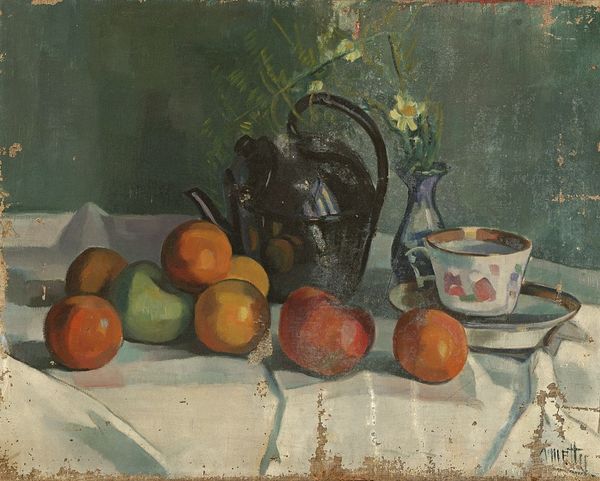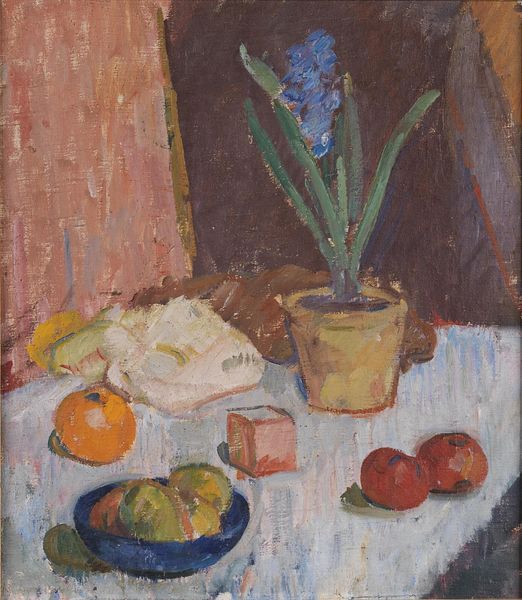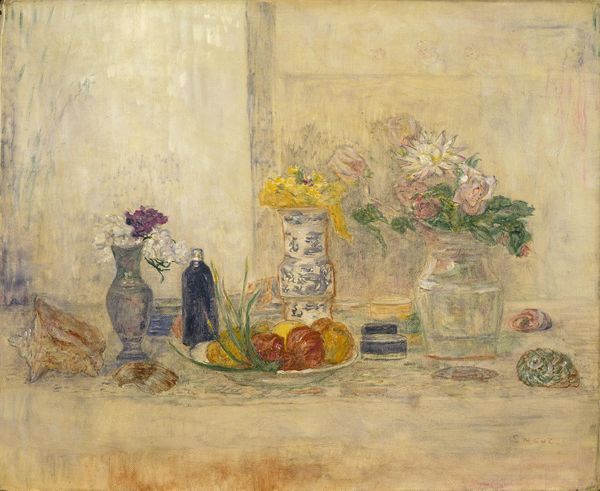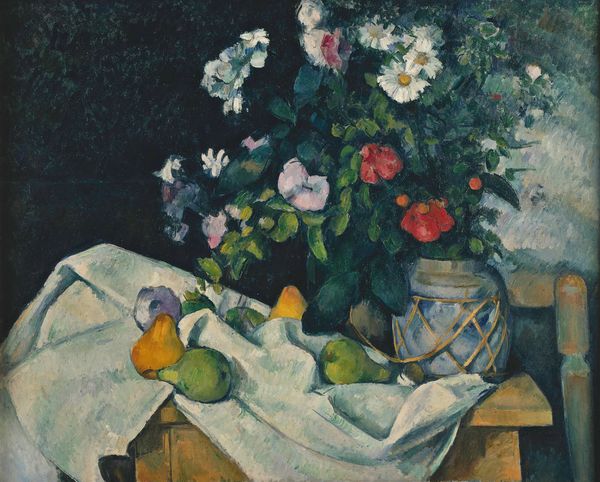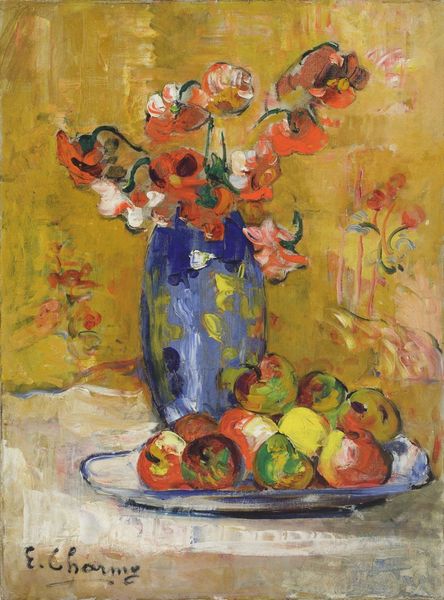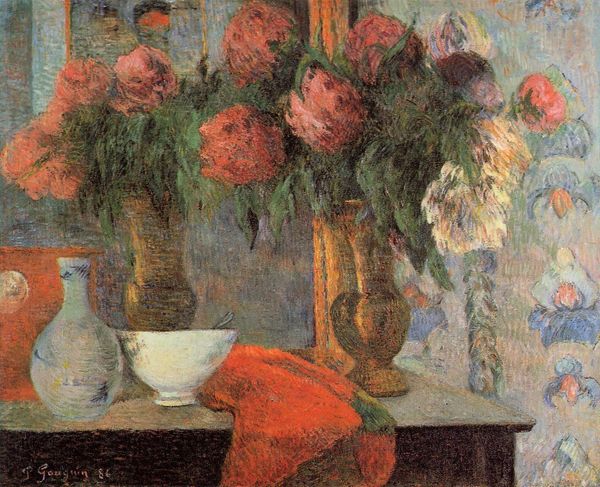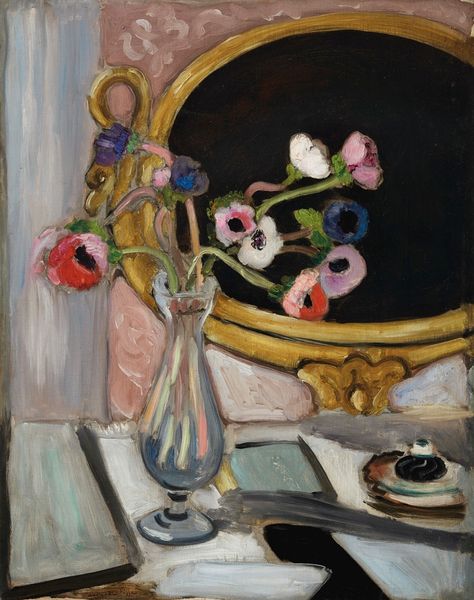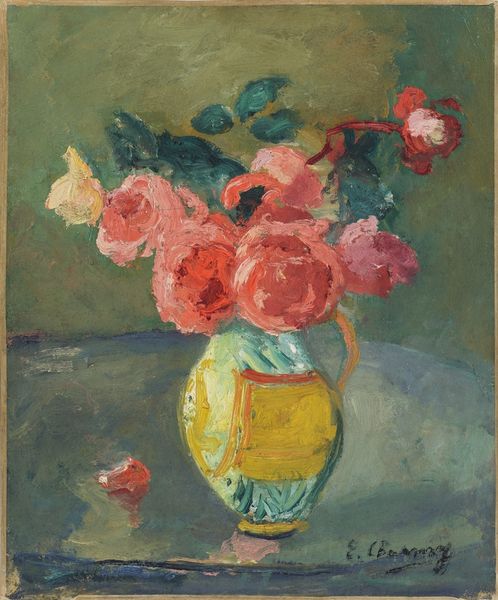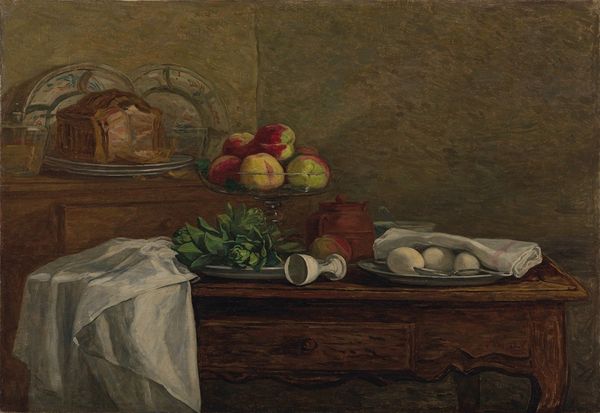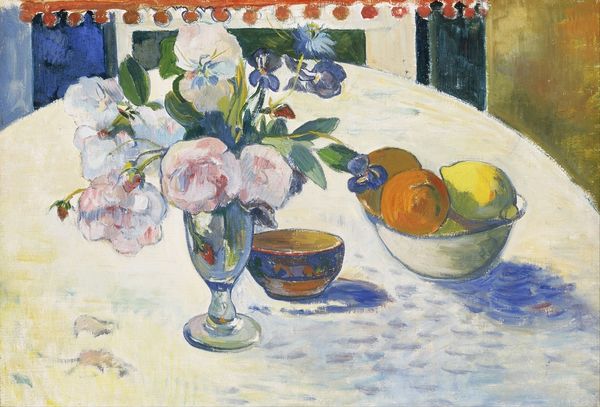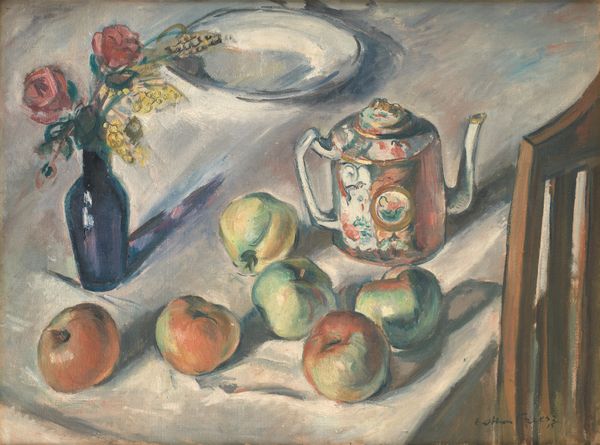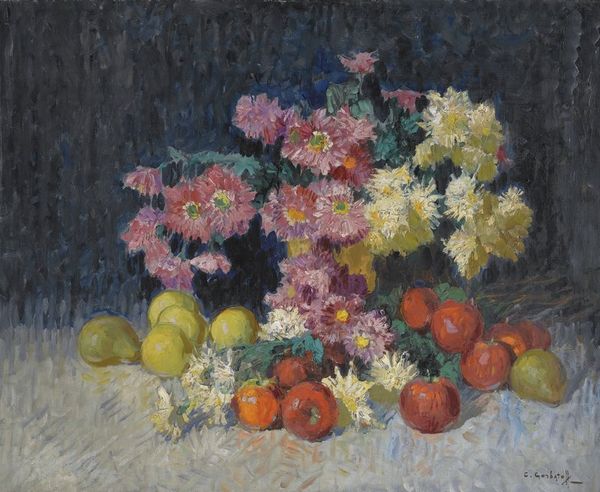
Dimensions: 97.7 cm (height) x 79 cm (width) (Netto), 115.7 cm (height) x 96.9 cm (width) x 8.3 cm (depth) (Brutto)
Astrid Holm made Rose Laying the Table with oil paint, and the way she handles the paint feels so natural. She’s not trying to hide her process. You can see every stroke, every decision. I love the pinks and mauves in this piece. It’s not a straightforward color palette, and I appreciate that ambiguity. Look at the pineapple. See how the greens and blues interact with the warmer oranges and reds? Holm’s willing to let the colors vibrate against each other, creating a sense of movement and energy. The paint isn’t overworked, but it is considered. It makes me think of Bonnard, in a way. Not in terms of subject matter, necessarily, but in terms of a willingness to let the painting live in a state of flux. It’s like she’s saying, "Here’s what I see, but I’m not going to force it into a neat little package." It’s more like an invitation to participate in the act of seeing.
Comments
No comments
Be the first to comment and join the conversation on the ultimate creative platform.
